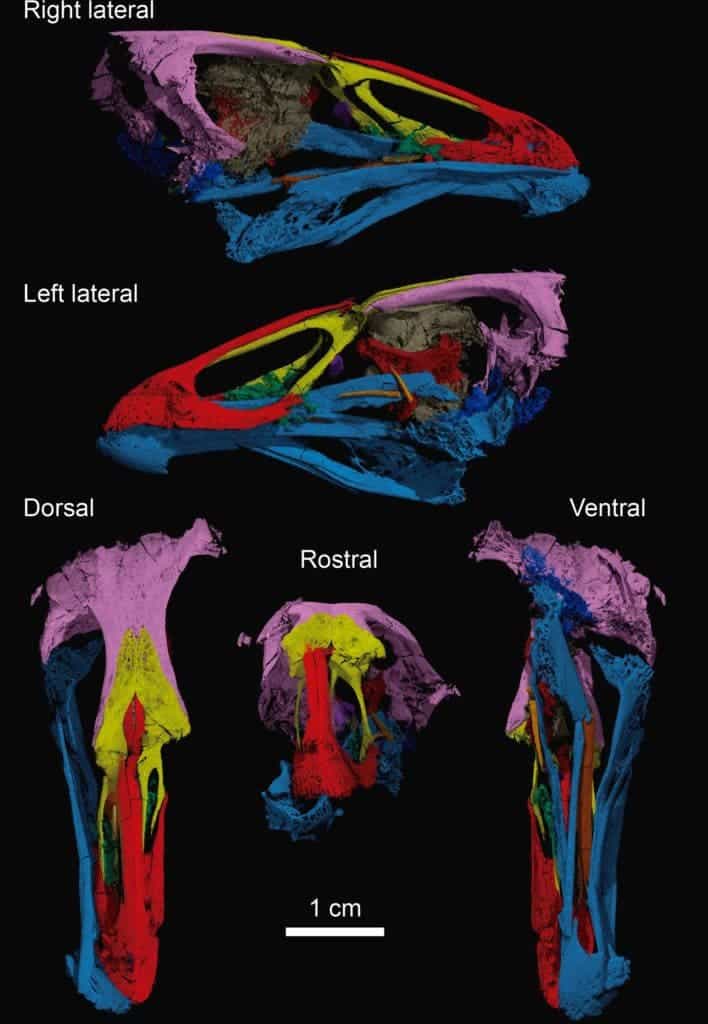The fossil represents the oldest modern bird species found to date, hailing all the way back to when dinosaurs still roamed the Earth.

Image credits Daniel J. Field et al., (2020), Nature.
Nicknamed the “Wonderchicken”, the fossil includes a nearly complete skull and was found in a limestone quarry near the Belgian-Dutch border. The bird likely lived alongside dinosaurs up to the end of the Cretaceous period and will help researchers piece together why birds survived the asteroid impact which wiped dinosaurs off the face of the Earth.
This is the first time a modern bird hailing from the dinosaur era has been found in the northern hemisphere.
Tastes like chicken
“The moment I first saw what was beneath the rock was the most exciting moment of my scientific career,” said Dr. Daniel Field from Cambridge’s Department of Earth Sciences, who led the research.
“This is one of the best-preserved fossil bird skulls of any age, from anywhere in the world. We almost had to pinch ourselves when we saw it, knowing that it was from such an important time in Earth’s history.
The Wonderchicken skull shows a combination of features seen in fowl such as ducks and chickens, suggesting that this species is close to the last common ancestor of the two modern bird families (group Galloanserae). The fossil itself was dated to around one million years before this extinction event.
The team used high-resolution X-ray CT scans to investigate the fossil, which is embedded in a piece of rock about the same size as a deck of cards. Their efforts revealed a stunning discovery: the nearly-complete skull of a 66.7-million-year-old bird.
“Finding the skull blew my mind,” said co-author Juan Benito, also from Cambridge, who was CT scanning the fossils with Field when the skull was discovered.
“Without these cutting-edge scans, we never would have known that we were holding the oldest modern bird skull in the world.”
While the team affectionately refers to the fossil bird as the Wonderchicken, they have also given it a proper scientific name: Asteriornis maastrichtensis, from the Greek Titaness of falling stars Asteria and the Maastrichtian geological age.
“We thought it was an appropriate name for a creature that lived just before the end-Cretaceous asteroid impact,” said co-author Dr. Daniel Ksepka from the Bruce Museum in Greenwich, Connecticut.
“In Greek mythology, Asteria transforms herself into a quail, and we believe Asteriornis was close to the common ancestor that today includes quails, as well as chickens and ducks.”
The paper “Late Cretaceous neornithine from Europe illuminates the origins of crown birds” has been published in the journal Nature.



